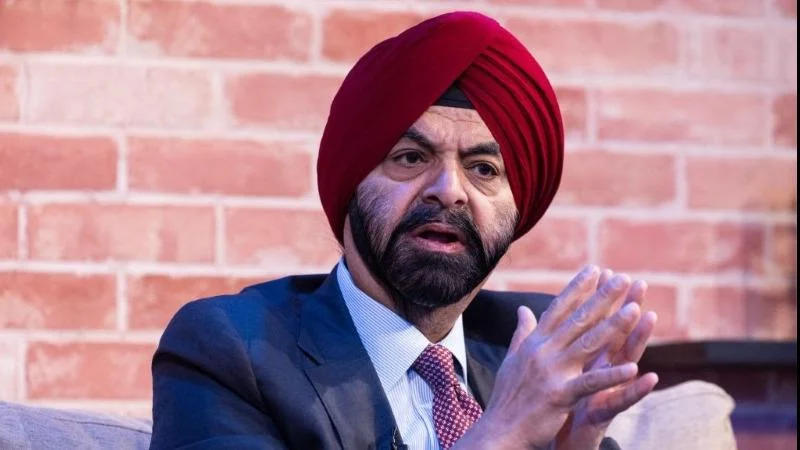Nepal’s economy showed improvement in the fiscal year 2025, with growth rising to 4.6 percent from 3.7 percent in the previous year, according to a new report. The World Bank's Nepal Development Update notes that this recovery was led by gains in manufacturing and construction, which benefited from increased hydropower generation. Agriculture also supported growth as paddy output increased despite flood-related setbacks.
The services sector had mixed results. Tourism slowed due to upgrades at Tribhuvan International Airport and disruptions to flights caused by geopolitical tensions in the Middle East. Financial sector activity was dampened by weak credit demand and an increase in non-performing loans (NPLs). However, wholesale and retail trade improved thanks to higher imports and better access to trade finance.
Headline inflation decreased to 4.1 percent, down from 5.4 percent last year, falling below the Nepal Rastra Bank’s ceiling of 5 percent. Both food and non-food inflation moderated but were partially offset by higher transport costs linked to public fare increases.
Monetary policy remained cautiously accommodative amid strong foreign exchange reserves and easing inflation pressures. The central bank cut its policy rate by 50 basis points at the start of FY25 after a larger reduction previously; lending rates fell sharply but private sector credit only grew modestly due to weak demand and higher NPLs. The ratio of NPLs rose from 3.9 percent at the end of FY24 to 4.6 percent at the end of FY25, even after measures aimed at supporting sectors like construction and agriculture.
The current account surplus widened further, reaching 6.7 percent of GDP—up from last year’s 3.9 percent—largely due to remittances sent home by Nepali workers moving abroad for higher wages, particularly in Japan and South Korea, as well as increased use of formal money transfer channels and a weaker currency relative to trading partners such as India.
Export growth was driven mainly by re-exports of refined edible oils like soybean and sunflower oil following changes in Indian import tariffs on products from outside SAFTA countries; imports also rose due mainly to purchases from suppliers including Argentina and Brazil.
Foreign exchange reserves strengthened further, now covering over fifteen months’ worth of imports—the highest level recorded for Nepal.
Fiscal performance improved: “The fiscal deficit narrowed to a nine-year low of 2 percent of GDP in FY25 supported by stronger revenue mobilization.” Revenues climbed due primarily to greater VAT collections, excise duties on alcohol/beer, customs duties on rising imports, while capital expenditure execution remained weak at just over sixty-three percent because of ongoing challenges across project cycles.
Looking ahead into fiscal year 2026 (FY26), real GDP growth is projected to slow significantly—to around two percent—reflecting recent unrest alongside heightened political/economic uncertainty: “Reflecting the recent unrest and heightened political and economic uncertainty, real GDP growth is projected to slow to 2.1 percent in FY26 in the baseline scenario.” Poverty rates are expected slightly above earlier projections but may decline again if reconstruction efforts accelerate next year.
Tourism activity is forecasted for sharp declines due mainly to lower international arrivals; insurance services will also feel pressure because asset losses have spillover effects post-unrest. Industrial activity tied specifically with hydropower should remain strong while other investments could weaken temporarily before recovering during planned reconstruction initiatives starting FY27.
Inflation should stay within five-percent targets given softer global commodity prices along with moderate inflation transmission via Nepal’s currency peg with India—but risks persist if local paddy output falls or natural disasters occur more frequently.
Remittance inflows are likely set for continued strength despite tourism underperformance; these flows will help widen current account surpluses further through next year before stabilizing later as remittances plateau.
Government spending is expected rise notably on reconstruction/elections/private relief measures: “The fiscal deficit is projected to widen in FY26... driven by increased spending on reconstruction...” Revenue collection may slow temporarily owing largely slower import/VAT/corporate tax receipts especially among insurance/tourism firms impacted most during downturns—but deficits are seen narrowing again once revenues recover post-reconstruction surge.
Key risks identified include frequent natural disasters/political instability that could impact overall economic activity or financial system stability (with NPL ratios rising), continued presence on anti-money-laundering watchlists limiting investor confidence—and possible infrastructure damage disrupting basic public services or administrative functions if not addressed swiftly during rebuilding phase.
On potential upside scenarios: “A successful political transition and sustained macroeconomic management could strengthen investor sentiment supporting a stronger economic recovery.”

